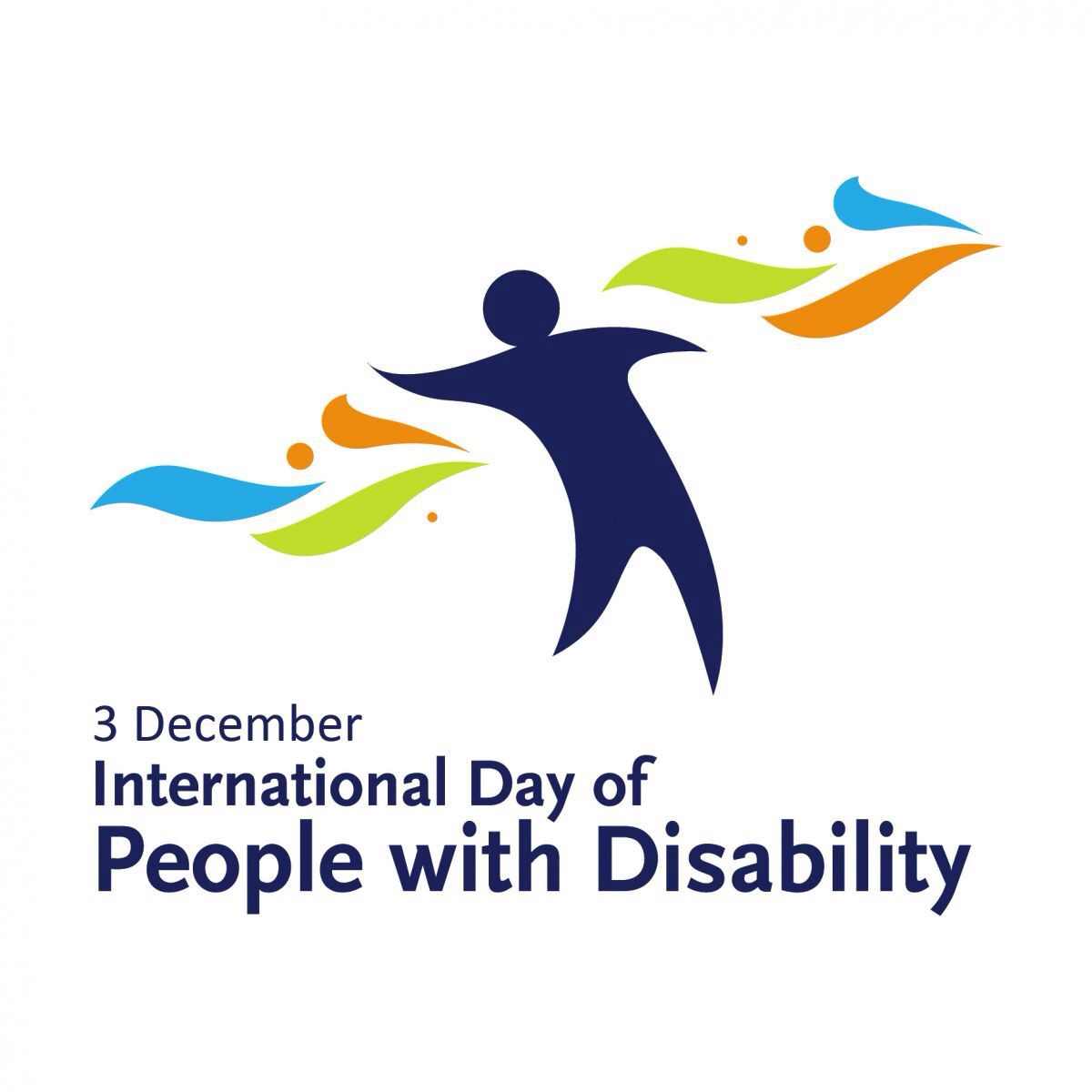
Logo of the International Day of People with Disabilities
Twenty-eight years ago, in 1992, the United Nations General Assembly resolution 47/3 proclaimed December 3 as International Day of Persons with Disabilities. Immediately following the International Day for the Abolition of Slavery and followed by the International Day of Banks (yes), the International Day of Persons with Disabilities was and still is charged with the impulse “to promote the rights and well-being of persons with disabilities in all spheres of society and development, and to increase awareness of the situation of persons with disabilities in every aspect of political, social, economic and cultural life.” Each year, a specific theme is chosen to direct public attention toward a specific issue. In 2018, it was “Empowering persons with disabilities and ensuring inclusiveness and equality.” In 2019, “Promoting the participation of persons with disabilities and their leadership: taking action on the 2030 Development Agenda.” In 2020, “Not all disabilities are visible.” A product of a policy-oriented reformist environment, International Day of Persons with Disabilities helps to direct attention, mobilize action, and bring about material changes in the lives of people with disabilities. But what happens to these impulses on December 4th (besides the International Day of Banks)?
The existence of such a day and its “feel-good” ethos bring me to question what we accomplish by remembering people with disabilities once a year. In other words, how this initiative temporalizes public attention to disability-related questions—in the form of a single day—matters. A day, a week, a year, a decade—any temporal frame is based on a logic of finality, that a “solution” can be found. What about issues that demand sustained attention and effort, like inaccessibility, systemic exclusion, repeated stereotyping, and structural, economic, and social marginalization? The use of such finite temporal frames absolves those observing the day from the responsibility of addressing the institutionalized and systemic devaluation of disability as a less-supported form of life and social status.
Besides its temporal demand to engage with disability-themed issues on a given day, the day’s focus on “the situation of persons with disabilities in every aspect of political, social, economic, and cultural life” gives the impression that disability-related issues concern only people with disabilities, that they are biopolitically anchored in one clearly delineated and separate population. In this context, a whole range of problems fall out of focus: the social worlds of disability that include people with and without disabilities (Addlakha 2020); the global outsourcing of debilitation (Puar 2017); using ableist language to explain racist and other discriminatory choices (s.e. smith 2020), to name just a few. None of these issues fits neatly within the domain of “the situation of a person with disabilities” yet indirectly they contribute to the ways in which disability has emerged as a devalued marker of exclusion. Unsurprisingly, a search of “ableism” or “disablism” related content on the Day’s website returned no results. Recognizing disability as a structural framework in contemporary society as opposed to an incidental individual characteristic (Ben-Moshe 2020), paying attention to the ontology and epistemology of ableism (Campbell 2009), and tracing how ableism intersects with other forms of systemic oppression (Schalk and Kim 2020) may offer helpful conceptual paths out. It would, however, suggest us to rethink and redesign the social, economic, and political systems in which we live (for examples of disability justice driven strategies see Piepzna-Samarasinha 2018; Sins Invalid 2019).
This post is in some ways self-subversive: it calls for sustained and systematic attention to disability as an analytic, even as it is published on International Day of People with Disabilities. In the spirit of this contradictory nature, it brings the readers’ attention to other posts that tackled the questions of disability on Platypus in 2020. I invite you to read these pieces as they explore how disability resonate and engage with broader questions of social inclusion, care, wellbeing, and identity performance.
Elements of Disability Inclusion in Soviet Disability Pedagogy
“Doing Being a Latina,” or Performing Identities Through a Computer Voice
The Paradox of Autonomy and Care for Mothers of Adults with Disabilities in Brazil

1 Trackback